Search Result
Results for "
good permeability
" in MedChemExpress (MCE) Product Catalog:
| Cat. No. |
Product Name |
Target |
Research Areas |
Chemical Structure |
-
- HY-155079
-
|
|
EGFR
|
Cancer
|
|
DZD1516 is a potent and selective HER2 inhibitor (IC50=0.56 nM) with good blood-brain permeability. DZD1516 exhibits antitumor activity in CNS and subcutaneous xenograft mouse models .
|
-
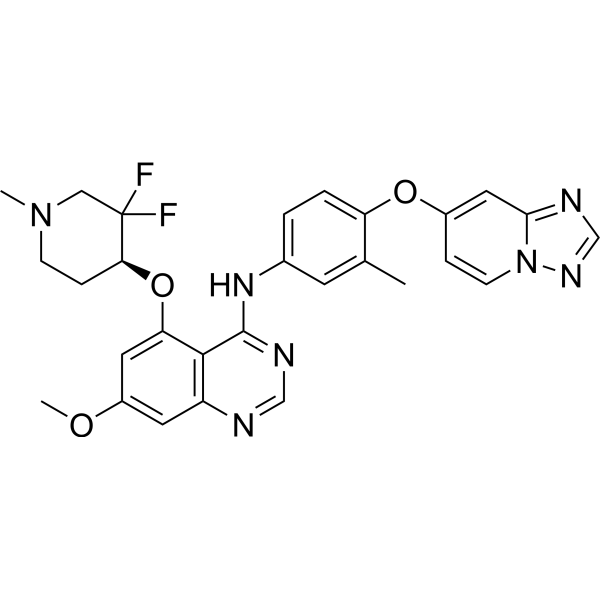
-
- HY-147285
-
|
|
mTOR
PI3K
|
Neurological Disease
|
|
PI3K/mTOR Inhibitor-9 (Compound 1) is a potent mTOR and PI3K inhibitor with IC50 values of 38 nM, 6.6 μM, 6.6 μM and 0.8 μM against mTOR (phospho-S6 cellular assay), PI3Kα, PI3Kγ and PI3Kδ, respectively .
|
-
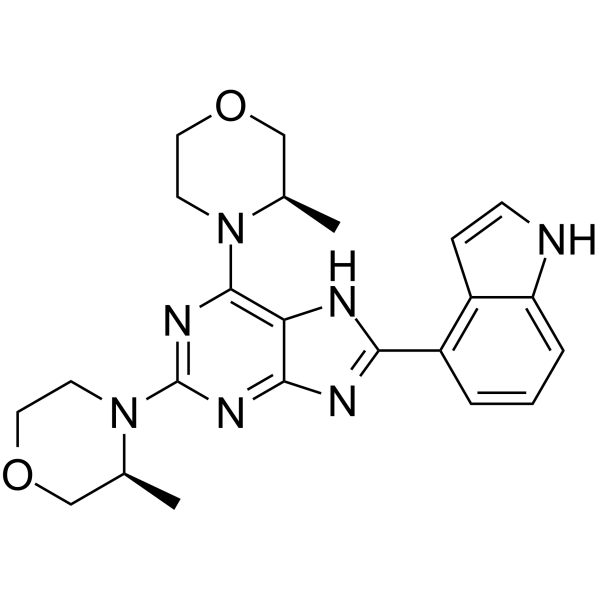
-
- HY-163350
-
|
|
GPR84
|
Inflammation/Immunology
|
|
TUG-2208 (compound 42a) is a GPR84 agonist with low lipophilicity and good solubility, in vitro permeability and microsomal stability .
|
-
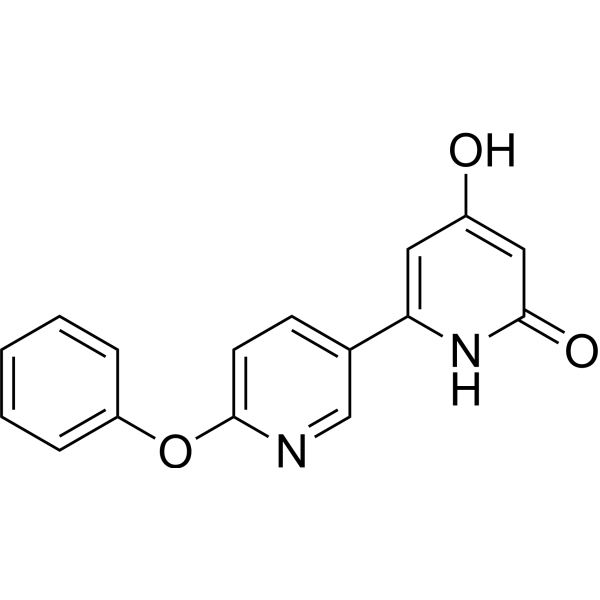
-
- HY-103266
-
|
|
Aurora Kinase
|
Cancer
|
|
TC-A 2317 hydrochloride is an orally active Aurora A kinase inhibitor (Ki=1.2 nM). TC-A 2317 hydrochloride exhibits excellent selectivity to Aurora B kinase (Ki=101 nM) and other 60 kinases, good cell permeability and good PK profile. Antitumor activity .
|
-
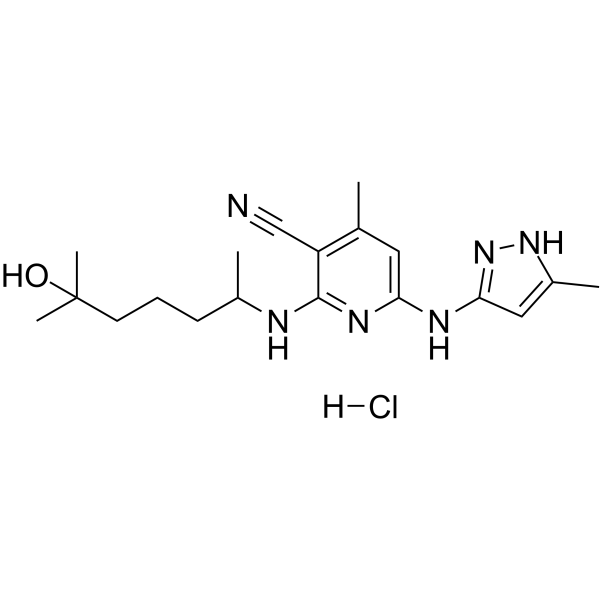
-
- HY-153715
-
|
Mitochondria modulator-1
|
Biochemical Assay Reagents
|
Metabolic Disease
|
|
Mitochondria modulator-1 is a mitochondrial regulator that stimulates mitochondrial ATP production. Mitochondria modulator-1 has good oral bioavailability, blood-brain barrier permeability, and good plasma stability. Mitochondria modulator-1 has the potential to study mitochondrial diseases .
|
-
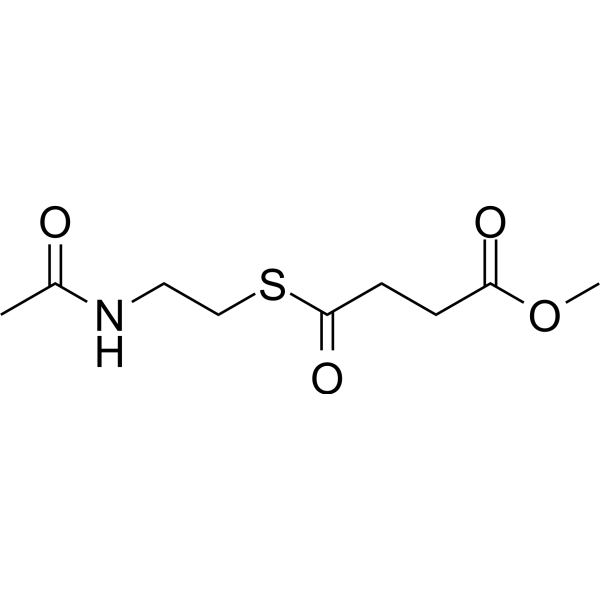
-
- HY-155992
-
|
|
Sigma Receptor
|
Neurological Disease
|
|
WLB-89462 (Compound 20c) is a selective σ2 receptor ligand (Ki: 13 nM). WLB-89462 has neuroprotective activity. WLB-89462 improves short-term memory impairment induced by Aβ peptide in rats. WLB-89462 has good ADMET profile (good solubility, no CYP inhibition, good metabolic stability, high permeability, brain penetration, and high oral exposure in rodents) .
|
-

-
- HY-153241
-
|
|
Epigenetic Reader Domain
|
Cancer
|
|
GSK737 is a BRD4 BD1 and BD2 inhibitor, with pIC50 values of 5.3 and 7.3 respectively. GSK737 has low clearance and good solubility and permeability in rat .
|
-
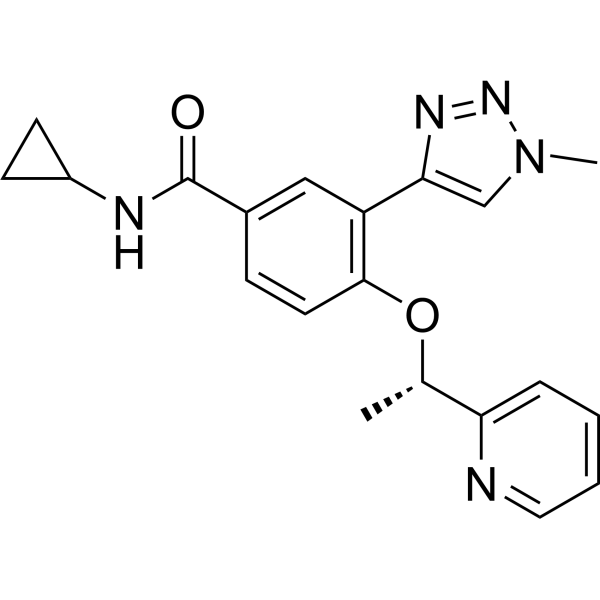
-
- HY-147726
-
|
|
Microtubule/Tubulin
|
Cancer
|
|
Microtubule inhibitor 5 (compound 17f) is a potent microtubule inhibitor. Microtubule inhibitor 5 shows cytotoxicity with an IC50 value of 154.5 nM for NCI-H460 cells. Microtubule inhibitor 5 shows good cell permeability .
|
-
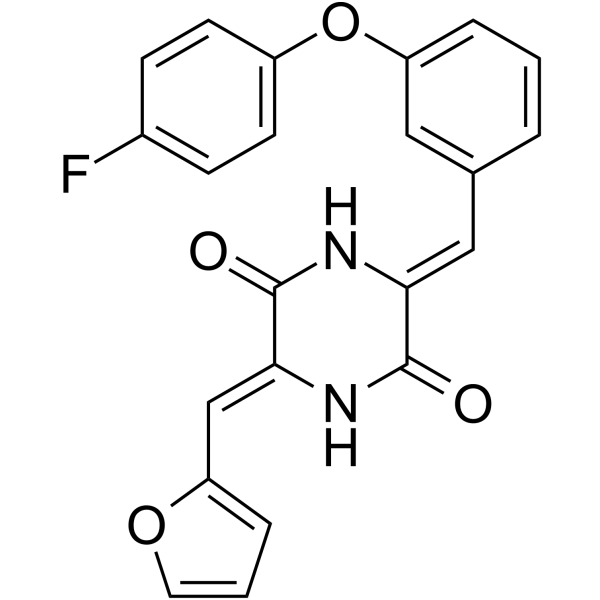
-
- HY-149820
-
|
|
Monoamine Oxidase
|
Neurological Disease
|
|
MAO-B-IN-22 (compound 6h) is a potent MAO-B inhibitor with an IC50 of 0.014 μM. MAO-B-IN-22 has high antioxidant activity, good metal chelating ability, proper BBB permeability and significant neuroprotective effect .
|
-
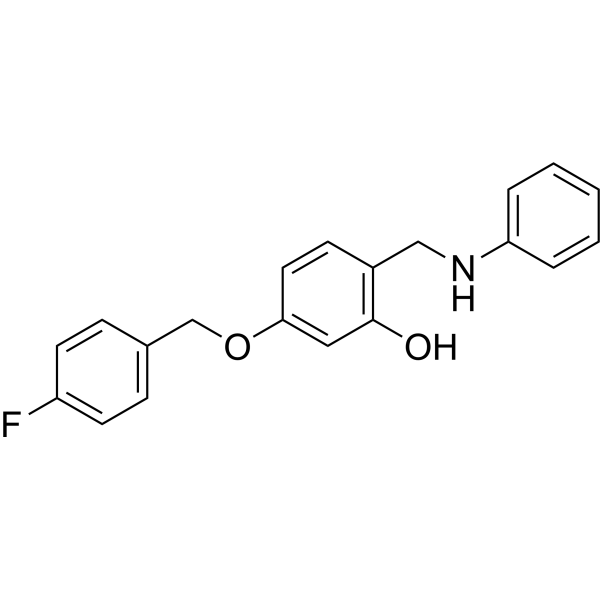
-
- HY-161380
-
|
|
Fungal
|
Infection
|
|
Antifungal agent 96 (Compound WZ-2) is an antifungal agent with good blood-brain barrier permeability and brain penetration. Antifungal agent 96 inhibits the growth of C. neoformans H99 and C. albicans 0304103 with MIC values of 0.016 and 32 μg/mL, respectively .
|
-

-
- HY-103234A
-
|
|
iGluR
|
Neurological Disease
|
|
GYKI 52466 dihydrochloride is an orally active, highly selective and noncompetitive AMPA/kainate receptor antagonist with the IC50 values of 7.5 and 11μM, respectively. GYKI 52466 dihydrochloride has good blood brain barrier permeability and anticonvulsant effect. GYKI 52466 dihydrochloride can be used in Parkinson's disease research .
|
-
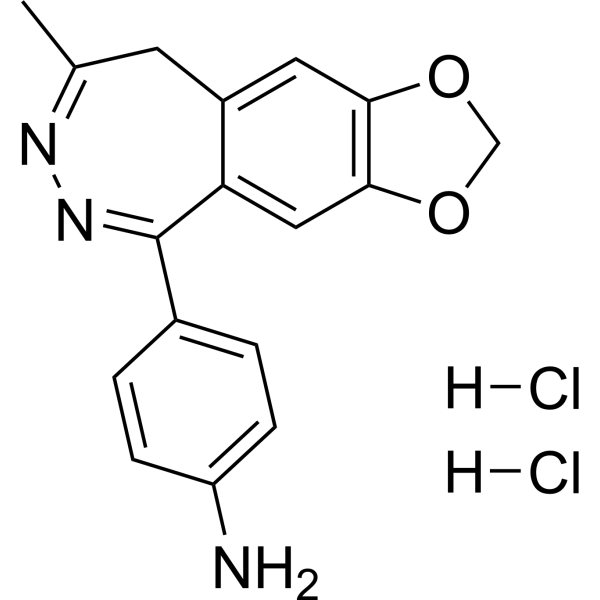
-
- HY-147738
-
|
|
Fluorescent Dye
|
Others
|
|
SQM-NBD is a potent and selectiveAIE fluorescent probe. SQM-NBD exhibits excellent sensitivity to Cys and Hcy with the LOD of 54 nM and 72 nM, respectively.SQM-NBD has good cell permeability and low cytotoxicity. SQM-NBD has the potential for Cys/Hcy identification under physiological and pathological conditions .
|
-

-
- HY-103234
-
|
|
iGluR
|
Neurological Disease
|
|
GYKI 52466 is an orally active, highly selective and noncompetitive AMPA/kainate receptor antagonist with the IC50 values of 7.5 and 11μM, respectively. GYKI 52466 has good blood brain barrier permeability and anticonvulsant effect. GYKI 52466 can be used in Parkinson's disease research .
|
-

-
- HY-149242
-
|
|
Monoamine Oxidase
|
Neurological Disease
|
|
MAO-B-IN-20 (Compound C14) is a potent MAO-B inhibitor with an IC50 of 0.037 μM. MAO-B-IN-20 displays good metabolic stability and brain-blood barrier permeability. MAO-B-IN-20 can be used for the research of Parkinson's disease .
|
-
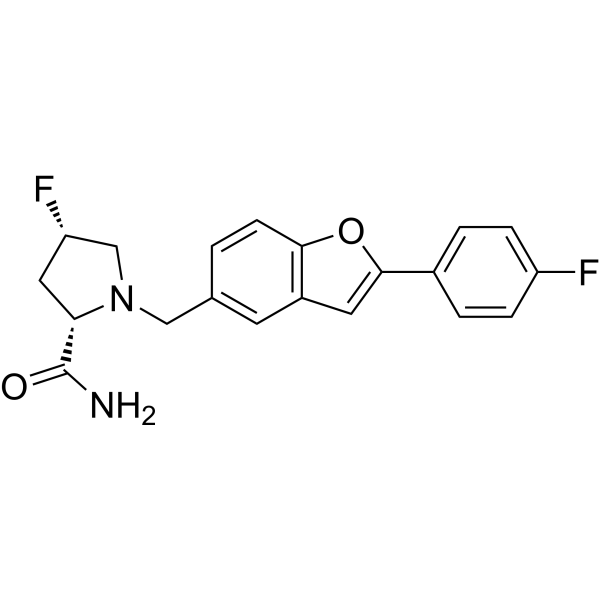
-
- HY-103234B
-
|
|
iGluR
|
Neurological Disease
|
|
GYKI 52466 hydrochloride is an orally active, highly selective and noncompetitive AMPA/kainate receptor antagonist with the IC50 values of 7.5 and 11μM, respectively. GYKI 52466 hydrochloride has good blood brain barrier permeability and anticonvulsant effect. GYKI 52466 hydrochloride can be used in Parkinson's disease research .
|
-
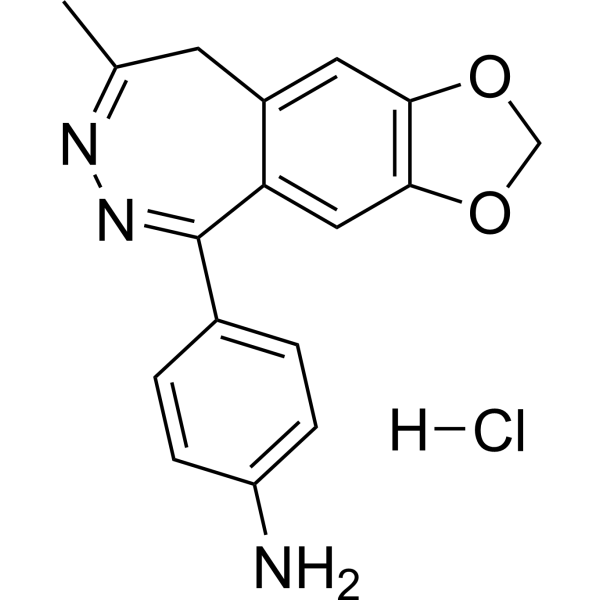
-
- HY-124638
-
|
|
MNK
|
Cancer
|
|
MNK inhibitor 9 is a potent and selective inhibitor of MNK1/2 with IC50 values of 0.003 µM and 0.003 µM for MNK1 and MNK2 respectively. MNK inhibitor 9 has good cell permeability. MNK inhibitor 9 can be used in tumor related research .
|
-
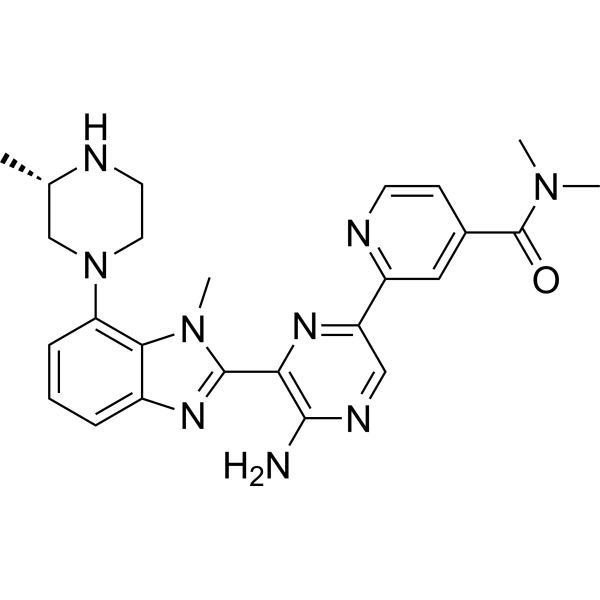
-
- HY-156432
-
|
|
Anaplastic lymphoma kinase (ALK)
mTOR
PARP
Caspase
|
Cancer
|
|
ALK-IN-26 is an ALK inhibitor with IC50 value of 7.0 μM for ALK tyrosine kinase. ALK-IN-26 has good pharmacokinetic properties and blood-brain barrier (BBB) permeability. ALK-IN-26 can induce apoptosis, autophagy and necrosis. ALK-IN-26 can be used in glioblastoma studies .
|
-
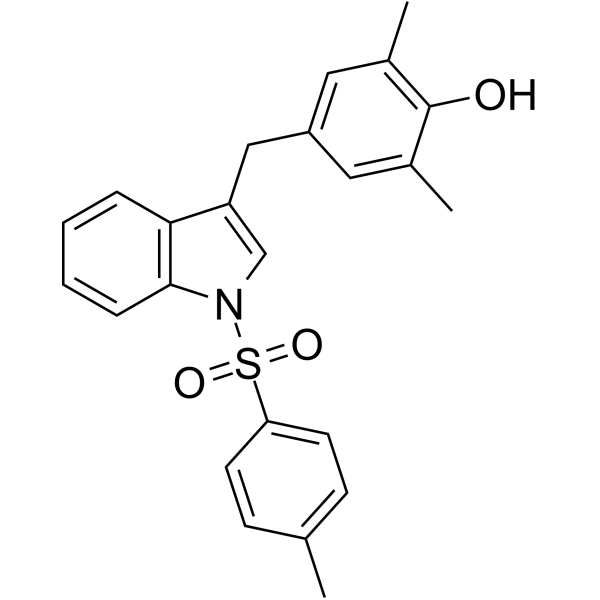
-
- HY-160656
-
|
|
5-HT Receptor
Others
|
Neurological Disease
|
|
5-HT/NA Reuptake inhibitor-1 (compound 9) is a selective dual 5-HT and NA reuptake inhibitor with IC50 of 660 nM and 70 nM respectively. . 5-HT/NA Reuptake inhibitor-1 has good in vitro human metabolic stability, hERG selectivity and passive membrane permeability .
|
-
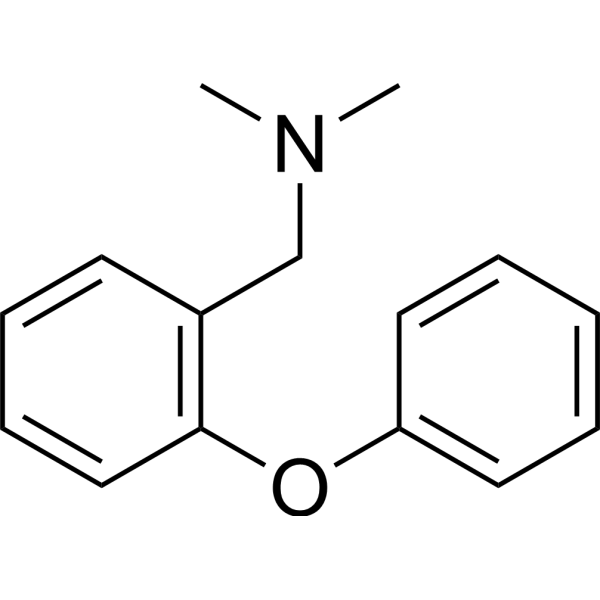
-
- HY-136026
-
|
BLU-5937
|
P2X Receptor
|
Inflammation/Immunology
|
|
Camlipixant (BLU-5937) a potent, selective, non-competitive and orally active P2X3 homotrimeric receptor antagonist with an IC50 of 25 nM against hP2X3 homotrimeric. Camlipixant shows potent anti-tussive effect and no taste alteration. Camlipixant can be used for the research of unexplained, refractory chronic cough .
|
-
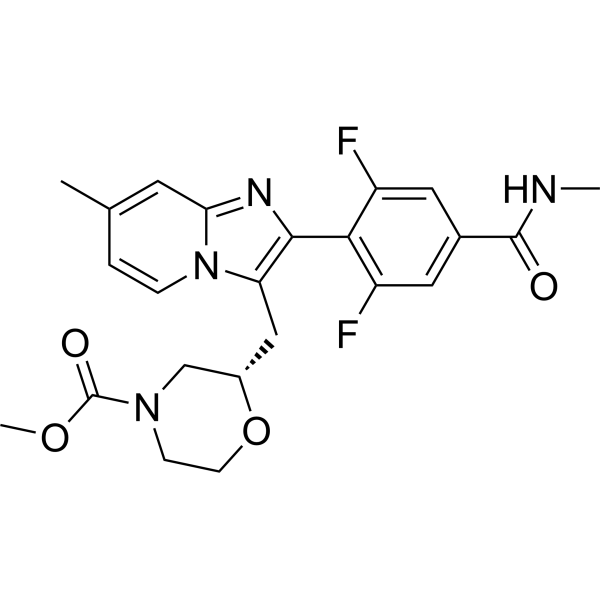
-
- HY-13340
-
|
VU152100
|
mAChR
|
Neurological Disease
|
|
VU0152100 (VU152100) is a highly selective mAChR positive allosteric modulator (permeable to the blood-brain barrier). VU0152100 reverses Amphetamine-induced hypermotility in rats and increased levels of extracellular dopamine in nucleus accumbens and caudate-putamen. VU0152100 has good research potential in psychosis and cognitive impairment associated with mental disorders such as schizophrenia .
|
-
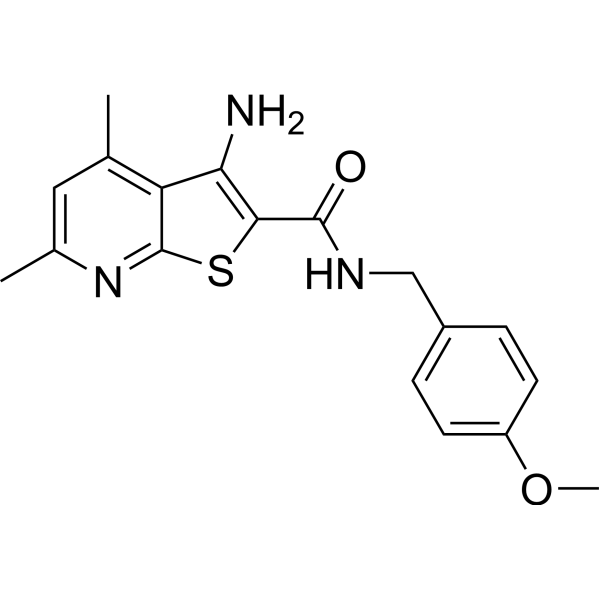
-
- HY-100855
-
|
|
Histone Methyltransferase
|
Cancer
|
|
DC_C66 is a cell-permeable, selective coactivator associated arginine methyltransferase 1 (CARM1) inhibitor with an IC50 of 1.8 μM. DC_C66 has a good selectivity for CARM1 against PRMT1 (IC50=21 μM), PRMT6 (IC50= 47μM), and PRMT5 .
|
-
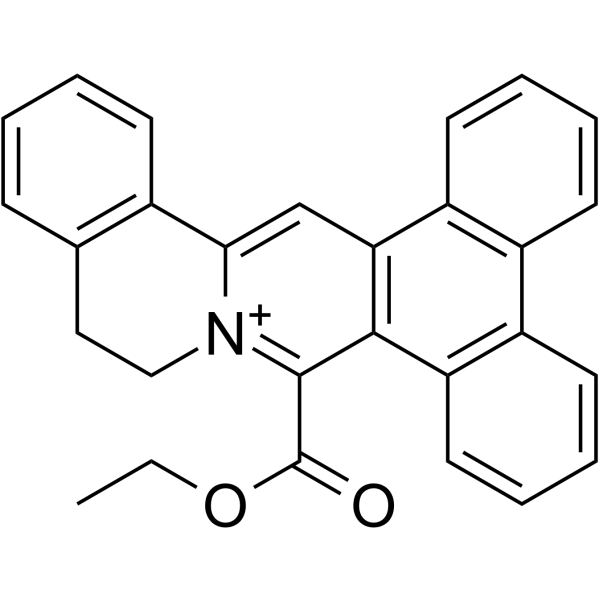
-
- HY-144660
-
|
|
Cholinesterase (ChE)
|
Neurological Disease
|
|
AChE-IN-7 (Compound 16) is a selective and potent inhibitor of acetylcholinesterase (eeAChE IC50 = 0.045 μM; eeBuChE IC50 = 19.68 μM). AChE-IN-7 is safe in vivo and in vitro, and shows good overall pharmacokinetic performance and high bioavailability (F = 55.5%). AChE-IN-7 also has high BBB permeability .
|
-

-
- HY-122614
-
S29434
2 Publications Verification
NMDPEF
|
Autophagy
|
Neurological Disease
|
|
S29434 (NMDPEF) is a potent, competitive, selective and cell-permeable inhibitor of quinone reductase 2 (QR2), with IC50s ranging from 5 to 16 nM for human QR2 at different organizational levels, and has good selectivity for QR2 over QR1. S29434 induces autophagy and inhibits QR2-mediated ROS production .
|
-
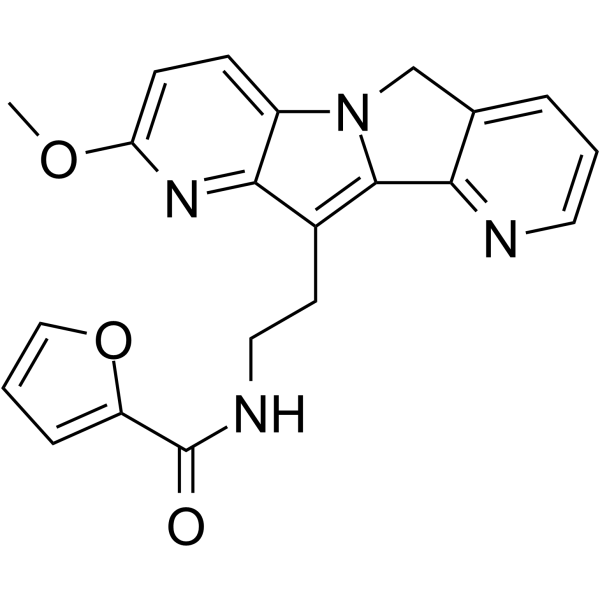
-
- HY-147397
-
|
|
Pyruvate Kinase
|
Cancer
|
PKM2 activator 3 is a potent PKM2 activator with an AC50 value of 90 nM. PKM2 activator 3 has good Caco-2 permeability, a low efflux ratio and high microsomal stability. PKM2 activator 3 can be used for researching anticancer .
(AC50: the concentration which gives 50% activation of enzyme.)
|
-
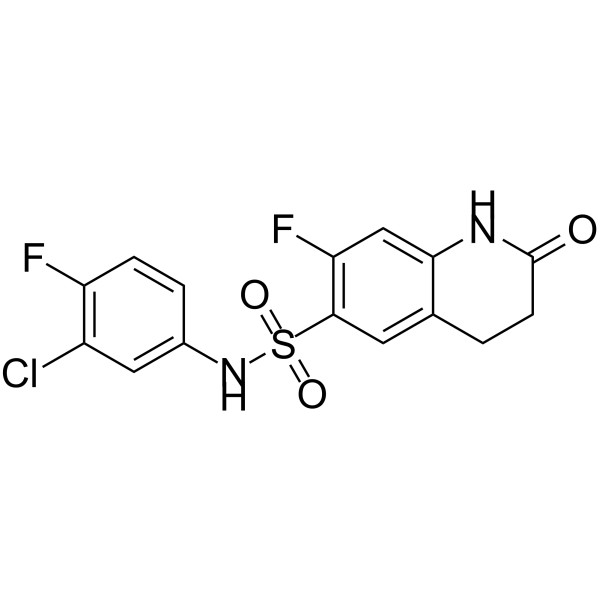
-
- HY-151368
-
|
|
Cholinesterase (ChE)
|
Neurological Disease
|
|
AChE/BChE-IN-10 (Compound 7b) is a potent dual AChE and BChE inhibitor with IC50 values of 0.176, and 0.47 μM, respectively. AChE/BChE-IN-10 shows good blood brain barrier permeability. AChE/BChE-IN-10 can inhibit Aβ-aggregation and be used in Alzheimer’s disease (AD) research .
|
-
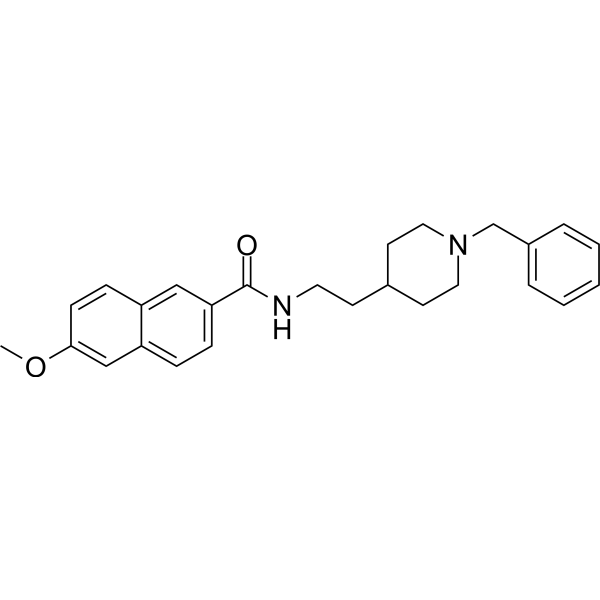
-
- HY-152614
-
|
|
Parasite
|
Infection
|
|
Antimalarial agent 19 (compound 6e) is an antimalarial active agent. Antimalarial agent 19 has antimalarial activity for the blood stage of P. falciparum K1 and P. berghei with EC50 values of 0.3 µM, 15.3 µM, respectively. Antimalarial agent 19 has good aqueous solubility, intestinal permeability and microsomal stability compared to gamhepathiopine .
|
-
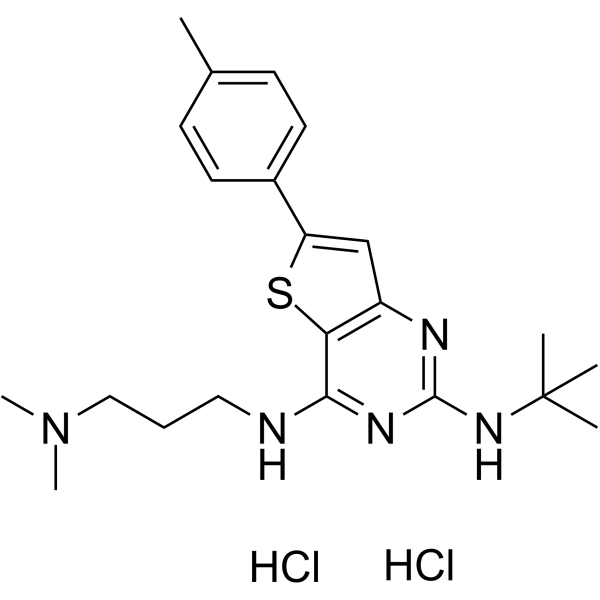
-
- HY-143330
-
|
|
Monoamine Oxidase
|
Neurological Disease
|
|
MAO-B-IN-4 (Compound 26) is an orally active and reversible MAO-B inhibitor with an IC50 of 9 nM. MAO-B-IN-4 has good metabolic stability, safety profile and brain permeability. MAO-B-IN-4 shows antidepressant activity in rats and mice. MAO-B-IN-4 can be used in studies related to Alzheimer's disease .
|
-
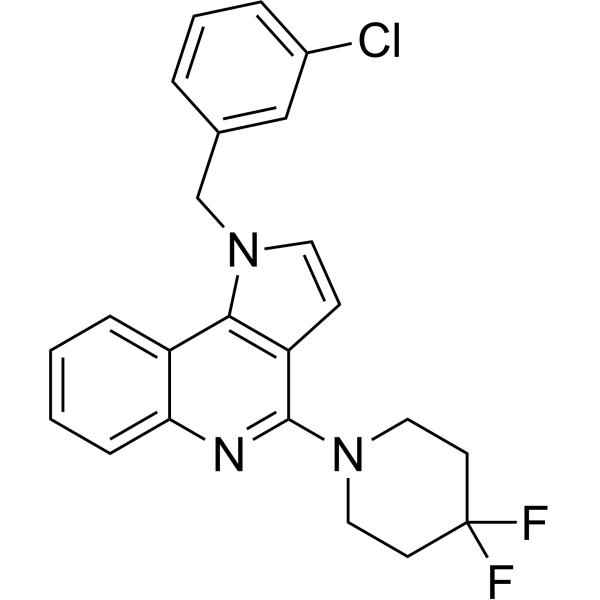
-
- HY-155541
-
|
|
Apoptosis
|
Cancer
|
|
Antitumor agent-110 (compound 13) is an anticancer imidazotetrazine with good permeability properties. Antitumor agent-110 arrests cell cycel at G2/M phase, and induces apoptosis . Antitumor agent-110 is a click chemistry reagent, it contains an Alkyne group and can undergo copper-catalyzed azide-alkyne cycloaddition (CuAAc) with molecules containing Azide groups.
|
-
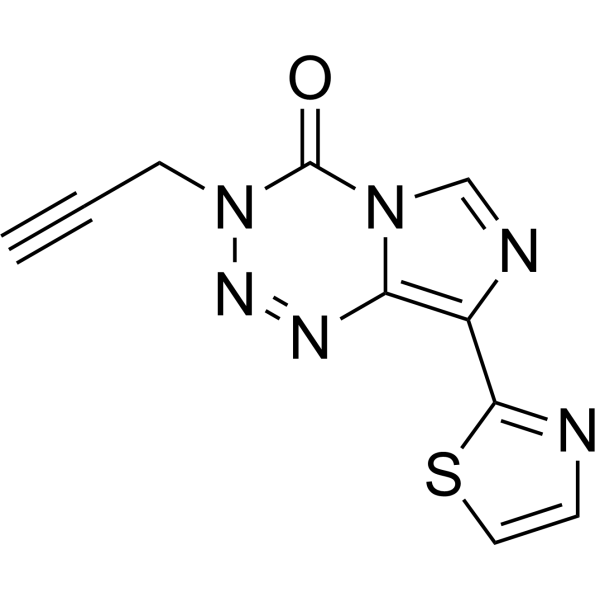
-
- HY-155478
-
|
|
Androgen Receptor
|
Cancer
|
|
Androgen receptor-IN-6 (compound 16) is an orally available androgen receptor (Androgen Receptor) potent inhibitor (IC50=0.12 μM in vitro), targeting the disordered N-terminal domain (NTD). Androgen receptor-IN-6 has good Caco2 cell membrane permeability and has an oral activity (F/%) of 16% in male CD-1 mice .
|
-
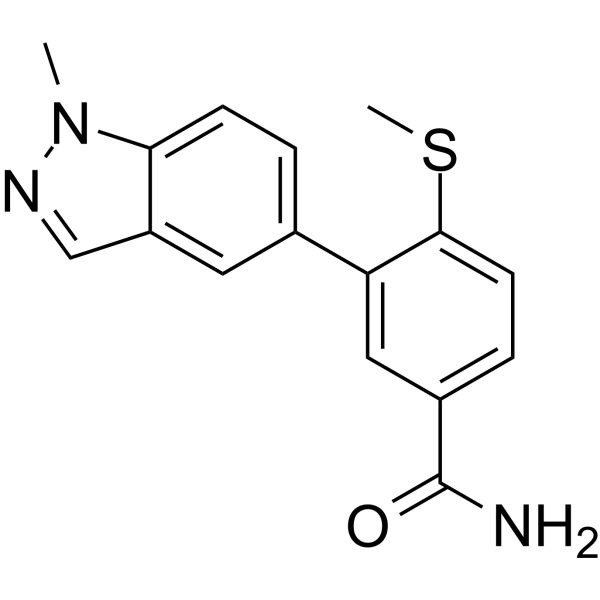
-
- HY-144272
-
-
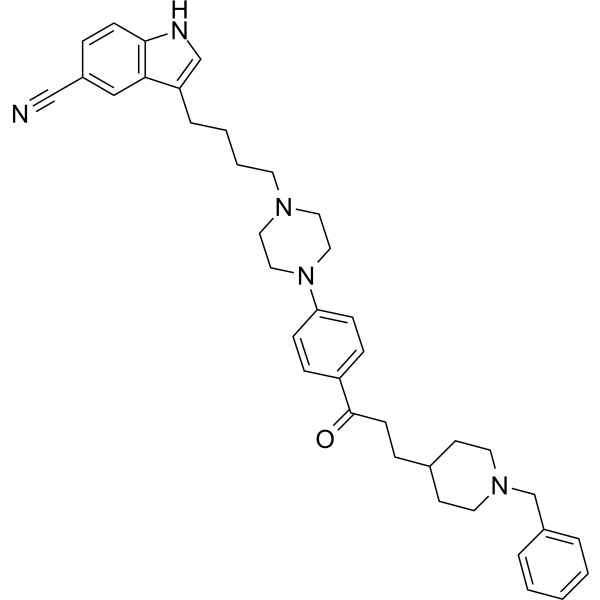
-
- HY-118858
-
|
|
EAAT
|
Neurological Disease
Cancer
|
|
UCPH-102 is a highly selective EAAT1 inhibitor with an IC50 of 0.43 µM. UCPH-102 exhibits a specific anti-proliferative effect on T-ALL cells. UCPH-102 also shows good blood-brain permeability, which can be used in studies of amyotrophic lateral sclerosis, Alzheimer’s disease, chronic pain and obsessive compulsive disorder .
|
-

-
- HY-119190
-
|
|
Phosphodiesterase (PDE)
|
Neurological Disease
|
|
PF-06445974, a promising positron emission tomography (PET) lead, has exquisite potency at PDE4B with an IC50 <1 nM. The IC50 values are 36, 4.7 and 17 nM for PDE4D, PDE4A and PDE4C, respectively. PF-06445974 has good selectivity over PDE4D, excellent brain permeability, and a high level of specific binding in the "cold tracer" study .
|
-
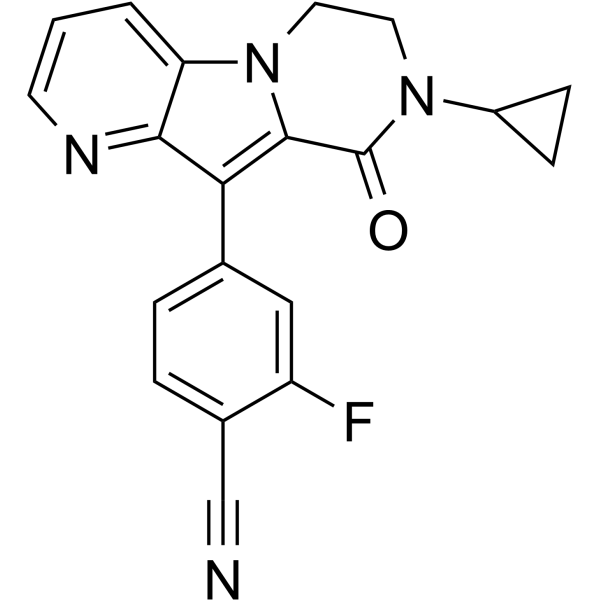
-
- HY-138648
-
|
|
Others
|
Neurological Disease
|
|
PB1 is a potent intracellular disulfide reducing agent with several advantages including good cell permeability, the ability to form a high intracellular concentration gradient, and stability. PB1 is a borane-protected TCEP (tris(2-carboxyethyl)phosphine) analogue. PB1 increases retinal ganglion cells survival after axotomy in vitro at nanomolar and picomolar concentrations. PB1 can be used for the research of neuroprotective .
|
-

-
- HY-146049
-
|
|
Parasite
|
Infection
|
|
Antitrypanosomal agent 4 (compound 19) is a potent and blood-brain barrier permeable antitrypanosomal agent. Antitrypanosomal agent 4 has good activity against Trypanosoma cruzi (T. cruzi) and Trypanosoma brucei brucei (T. b. brucei) with IC50s of 1.2 μM and 70 nM, respectively . Antitrypanosomal agent 4 is a click chemistry reagent, it contains an Alkyne group and can undergo copper-catalyzed azide-alkyne cycloaddition (CuAAc) with molecules containing Azide groups.
|
-
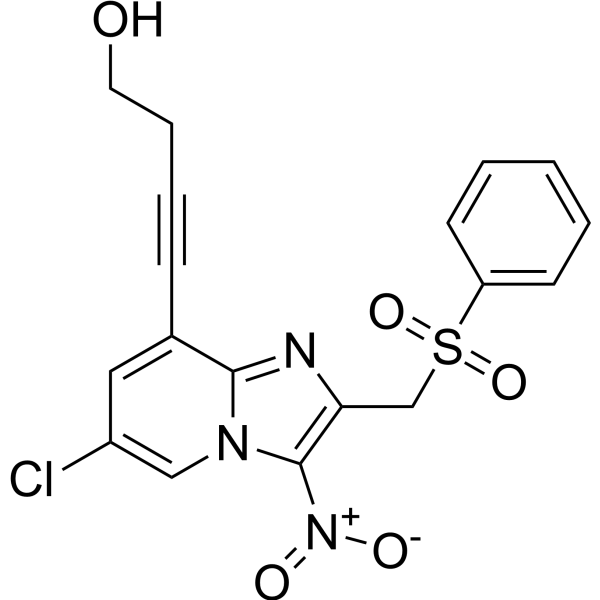
-
- HY-156965
-
|
|
Others
|
Metabolic Disease
Cancer
|
|
BAY-771, a structurally close pyrimidinedione, is a chemical probe with good lead-like properties and high permeability in Caco-2 cells (no hint of efflux). BAY-771 shows very weak inhibitory activity in the BCAT1 biochemical assay and no activity in BCAT2. BAY-771 can be used as a negative control of HY-148242 BAY-069. BAY-771 can be used for the research of tumor metabolism .
|
-
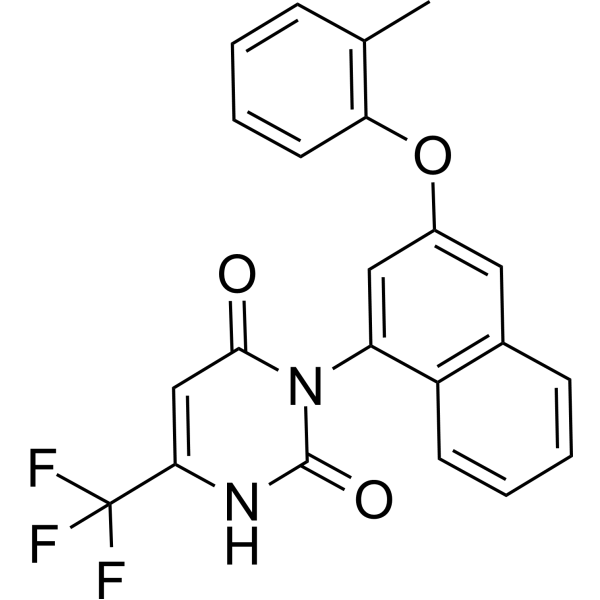
-
- HY-162133
-
|
|
STING
|
Cancer
|
|
MSA-2-Pt is an orally active STING agonist that has good cell membrane permeability. MSA-2-Pt can induce cell death by Pt, which may release damaged DNA to activate the cGAS-STING pathway. Besides, MSA-2-Pt can activate the STING pathway directly by MSA-2. MSA-2-Pt can be used for the research of cancer .
|
-
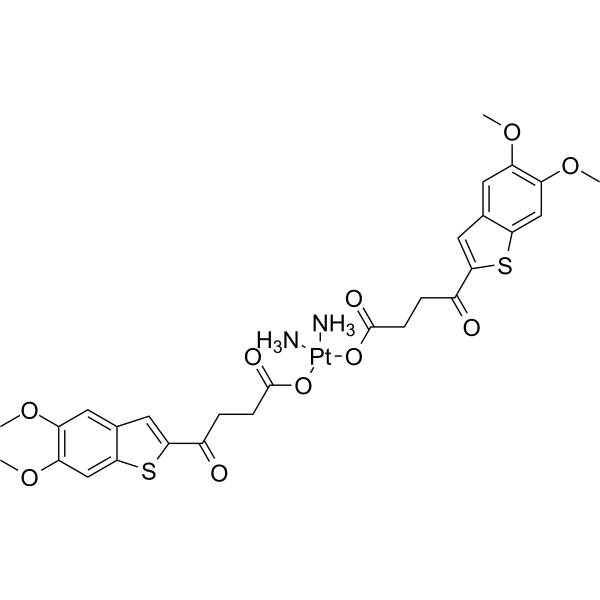
-
- HY-155061
-
|
|
Cytochrome P450
Aryl Hydrocarbon Receptor
|
Cancer
|
|
hCYP1B1-IN-1 (compound B18) is a hCYP1B1 inhibitor (IC50=3.6 nM),as well as an antagonist of Aryl Hydrocarbon Receptor. hCYP1B1-IN-1 exhibtis suitable metabolic stability and good cell-permeability. hCYP1B1-IN-1 inhibits migration of MCF-7 cells .
|
-
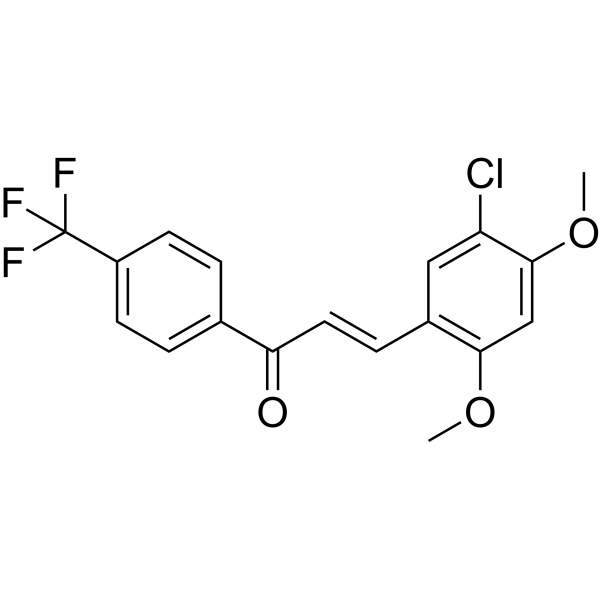
-
- HY-155733
-
|
|
iGluR
Cholinesterase (ChE)
Amyloid-β
|
Neurological Disease
|
|
AChE/Aβ-IN-1 (compound 32) is a potent and orally active inhibitor of acetylcholinesterase (AChE) with an IC50 of 86 nM, as well as an antagonist of NMDA receptor (GluN1-1b/GluN2B subunit combination) with IC50 of 3.876 μM. AChE/Aβ-IN-1 also inhibits Aβ aggregation and shows good blood-brain barrier permeability and neuroprotection. AChE/Aβ-IN-1 improves cognitive and spatial memory impairment in rats model .
|
-

-
- HY-155735
-
|
|
iGluR
Cholinesterase (ChE)
Amyloid-β
|
Neurological Disease
|
|
AChE/Aβ-IN-2 (compound 33) is a potent and orally active inhibitor of acetylcholinesterase (AChE) with IC50 of 135 nM, as well as an antagonist of NMDA receptor (GluN1-1b/GluN2B subunit combination) with IC50 of 5.054 μM. AChE/Aβ-IN-2 also inhibits Aβ aggregation and shows good blood-brain barrier permeability. AChE/Aβ-IN-2 improves cognitive and spatial memory impairment in rats model .
|
-
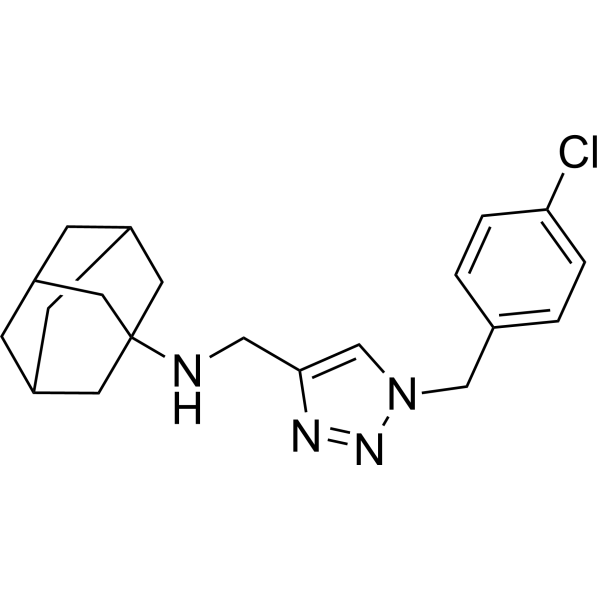
-
- HY-149090
-
|
|
Cholinesterase (ChE)
Monoamine Oxidase
|
Neurological Disease
|
|
AChE/BuChE/MAO-B-IN-2 (compound 4b) is a potent AChE/BuChE inhibitor and showed good blood brain barrier (BBB) permeability in vitro with an IC50 value of 5.3 μM, 12.4 μM, 1.9±0.08 μM, for AChE, BuChE, huMAO-B, respectively. AChE/BuChE/MAO-B-IN-2 (compound 4b) can inhibit excess AChE/BuChE in Alzheimer's disease (AD) brain. AChE/BuChE/MAO-B-IN-2 (compound 4b) can be used in anti-Alzheimer's research .
|
-

-
- HY-139604
-
|
|
Apoptosis
|
Cancer
|
|
PCC0208017 is a microtubule affinity regulating kinases (MARK3/MARK4) inhibitor with IC50s of 1.8 and 2.01 nM, respectively. PCC0208017 has much lower inhibitory activity against MARK1 and MARK2, with IC50s of 31.4 and 33.7 nM, respectively. PCC0208017 suppresses glioma progression in vitro and in vivo. PCC0208017 disrupts microtubule dynamics and induces G2/M phase cell cycle arrest and cell apoptosis. PCC0208017 demonstrates robust antitumor activity in vivo and displays good BBB permeability .
|
-

-
-
HY-L141
-
|
|
2550 compounds
|
|
Drug repurposing (also called drug repositioning, reprofiling, or re‑tasking) offers various advantages over developing an entirely new drug for a given indication, for example, lower risk of failure, less investment, and shorter development timelines. But drug repositioning projects are also subject to several risks, including regulatory and intellectual property issues. So the off-patent drugs are optimal for repositioning because of their immediate availability for clinical studies, with high feasibility and relatively low risk.
MCE carefully prepared a unique collection of 2550 off-patent drugs, which is a good choice for drug repurposing.
|
-
-
HY-L0121V
-
|
|
10,000 compounds
|
|
Natural products are an attractive source with varied structures that exhibit potent biological activities, and desirable pharmacological profiles. The core scaffold of a natural product can also provide a biologically validated framework upon which to display diverse functional groups. Inspired by bioactive natural products, natural product-like compounds, occupying the same chemical space, are ideally suited to explore and to facilitate understanding of biological pathways.
MCE 10K Natural Product-like Compound Library consists of 10,000 natural product-like compounds. Each compound has scaffold of natural products or Tanimoto coefficient >0.6 with natural products. The natural-likeness scoring of these compounds is >-2. What’s more, compounds in the library are drug-like and readily available for re-supply, making it a powerful tool for new drug research and development. It can be widely applied in high-throughput screening (HTS) and high-content screening (HCS).
|
| Cat. No. |
Product Name |
Target |
Research Area |
-
- HY-P4135
-
|
|
Peptides
|
Others
|
|
FITC-LC-Antennapedia Peptide is a FITC labeled Antennapedia Peptide (HY-P0307). Antennapedia Peptide is a cellular-membrane permeable peptides (CPP). FITC-LC-Antennapedia Peptide has good penetration in 3T3 cell line, which was rapidly accumulated into nuclei .
|
| Cat. No. |
Product Name |
|
Classification |
-
- HY-155541
-
|
|
|
Alkynes
|
|
Antitumor agent-110 (compound 13) is an anticancer imidazotetrazine with good permeability properties. Antitumor agent-110 arrests cell cycel at G2/M phase, and induces apoptosis . Antitumor agent-110 is a click chemistry reagent, it contains an Alkyne group and can undergo copper-catalyzed azide-alkyne cycloaddition (CuAAc) with molecules containing Azide groups.
|
Your information is safe with us. * Required Fields.
Inquiry Information
- Product Name:
- Cat. No.:
- Quantity:
- MCE Japan Authorized Agent:

















































